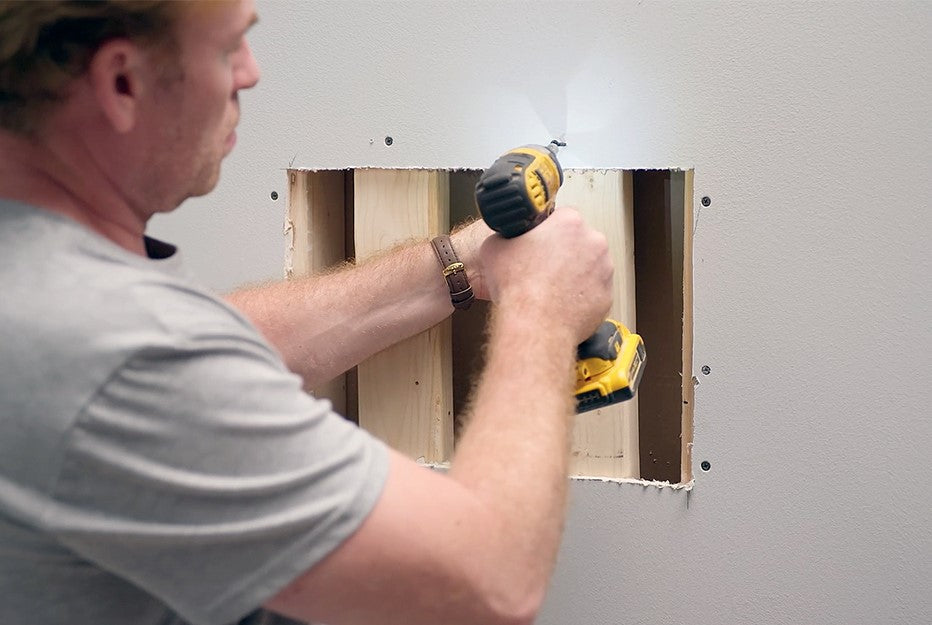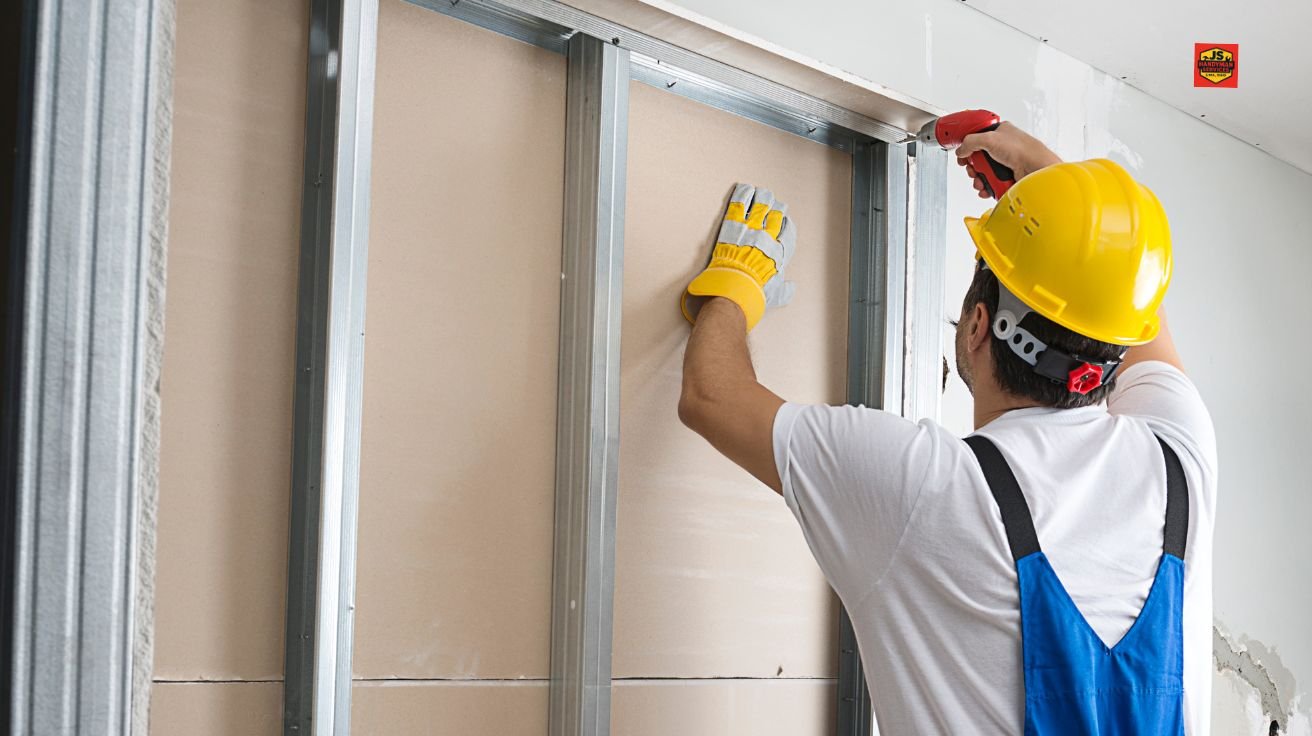Step-by-Step Approaches to Achieving Flawless Drywall Repair and Installment
Accomplishing flawless drywall repair work and installation calls for a systematic technique. It involves comprehending the various kinds of drywall and the devices required for the job. Proper area preparation is vital prior to starting any work. Interior Painting. Each step, from patching openings to mounting brand-new sheets, needs attention to information. The procedure doesn't finish with installment; finishing techniques are crucial for a sleek look. The following actions will assure a seamless outcome, yet what precisely do they entail?
Understanding Drywall Kind and Equipment Needed

The setup devices are similarly crucial. An utility blade is important for cutting drywall sheets, while a drywall saw can assist in making exact cuts for electrical outlets or fixtures. T-squares ensure precise dimensions, and drywall screws or nails safeguard the panels to wall surface studs. In addition, a drywall lift can help with the installment of big sheets, lessening physical pressure. Experience with these tools and types significantly adds to the efficiency and high quality of drywall jobs.
Preparing the Area for Fixing or Setup
Preparing the location for drywall repair service or setup is essential to guarantee a smooth and effective procedure. The surrounding room should be cleared of furniture and various other obstacles to provide sufficient functioning area. This not only ensures security but likewise avoids damages to items. Next, it is necessary to cover the flooring with ground cloth to catch any type of particles or dust produced throughout the work.
In addition, the walls need to be examined for any kind of loose paint or wallpaper that might hinder attachment. Eliminating these elements creates a clean surface area for the new drywall. Prior to start, it is advisable to turn off power to electric outlets or components around. Making certain ample lighting in the workspace will even more improve exposure and emphasis throughout the fixing or installment procedure. drywall contractor. By thoroughly preparing the location, one prepares for a successful drywall task
Step-by-Step Refine for Patching Holes

Patching openings in drywall requires a systematic technique to ensure a smooth repair. The primary step includes assessing the size of the opening. For small openings, a patching substance may be sufficient, while larger holes require a spot. Next off, the damaged area needs to be cleansed and prepared by getting rid of any kind of loose debris.
For tiny openings, using spackling compound with a putty blade is suggested, smoothing it over the opening and feathering the edges. Once completely dry, sanding the area guarantees a smooth coating. For bigger openings, a drywall patch ought to be reduced to dimension, positioned over the opening, and protected with screws. After setting up the spot, the same spackling procedure is duplicated, complied with by sanding.
Lastly, the patched area should be topped and repainted to match the surrounding wall. This careful process guarantees a professional look and expands the lifespan of the repair service.
Setting Up New Drywall Sheets: A Comprehensive Overview
Installing brand-new drywall sheets calls for careful preparation and execution to ensure a sturdy and visually appealing surface. The location needs to be determined accurately to establish the number of sheets required. It is essential to pick the right thickness, usually 1/2-inch for indoor wall surfaces and 5/8-inch for ceilings or fire-rated applications.
Next off, the studs or framework should be checked for any kind of irregularities, making certain they are aligned and appropriately spaced. When placing the drywall sheets, they should be placed horizontally to minimize seams and improve architectural stability. A drywall lift can be advantageous for above installations.
Fastening the sheets with drywall screws at proper intervals makes specific a protected setup. It is very important to countersink click here the screws somewhat below the surface to get ready for the completing process. Adhering to these standards will certainly lead to a strong structure, all set for the next action in drywall completing.
Ending Up Touches: Taping, Mudding, and Fining Sand Techniques
When the drywall sheets are firmly secured, the emphasis shifts to the finishing touches that will offer a refined appearance. This procedure starts with taping, utilizing either paper or fiberglass mesh tape to cover the seams between sheets. The tape guarantees a smooth shift, reducing the risk of splitting. Adhering to taping, mudding is important; a joint substance is used over the tape to fill gaps and create a smooth surface area. Usually, numerous layers are required, each one feathery out even more than the previous to decrease presence.
After enough drying out time, sanding is the final action in accomplishing a flawless finish. A fine-grit sandpaper is used to smooth the dried substance, ensuring there are no blemishes or bumps. Focus to information during this stage is significant, as it substantially influences the overall look of the wall surface. The end result must be an also, professional-looking surface all set for priming and painting.
Frequently Asked Concerns
How Do I Select the Right Drywall Thickness for My Task?
To choose the right drywall density, think about the project's function, location, and architectural needs. Requirement thicknesses consist of 1/2-inch for basic use and 5/8-inch for fire-rated applications, guaranteeing toughness and compliance with building ordinance.

Can I Mount Drywall Over Existing Drywall?
Yes, setting up drywall over existing drywall is feasible. It is important to guarantee the underlying surface is protected and free from damage. Proper attachment and factor to consider of density are critical for a successful setup.
What Are the Ideal Practices for Drywall Disposal?
The very best practices for drywall disposal include reusing when possible, making use of neighborhood waste management solutions, and complying with standards for harmful products if appropriate. Drywall Repair Ogden UT. Properly labeling and sealing waste guarantees conformity and security during disposal
For how long Should I Await Mud to Dry Prior To Sanding?
Generally, one should wait 24-hour for drywall mud to completely dry before fining sand. Drying time can vary based on moisture and temperature, so inspecting for a company structure is suggested before proceeding.
Are There Eco-Friendly Drywall Options Available?
Yes, environment-friendly drywall options are offered. These options often utilize recycled materials, low-VOC adhesives, and sustainable production methods, minimizing ecological influence while giving reliable insulation and resilience for different building and restoration tasks.
An utility knife is essential for cutting drywall sheets, while a drywall saw can aid in making accurate cuts for electrical outlets or components. Preparing the location for drywall repair work or installment is vital to guarantee a efficient and smooth process. Covering holes in drywall needs an organized method to assure a smooth repair work. Setting up brand-new drywall sheets requires cautious preparation and execution to guarantee a aesthetically enticing and sturdy surface. Yes, mounting drywall over existing drywall is feasible.